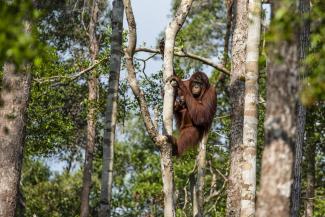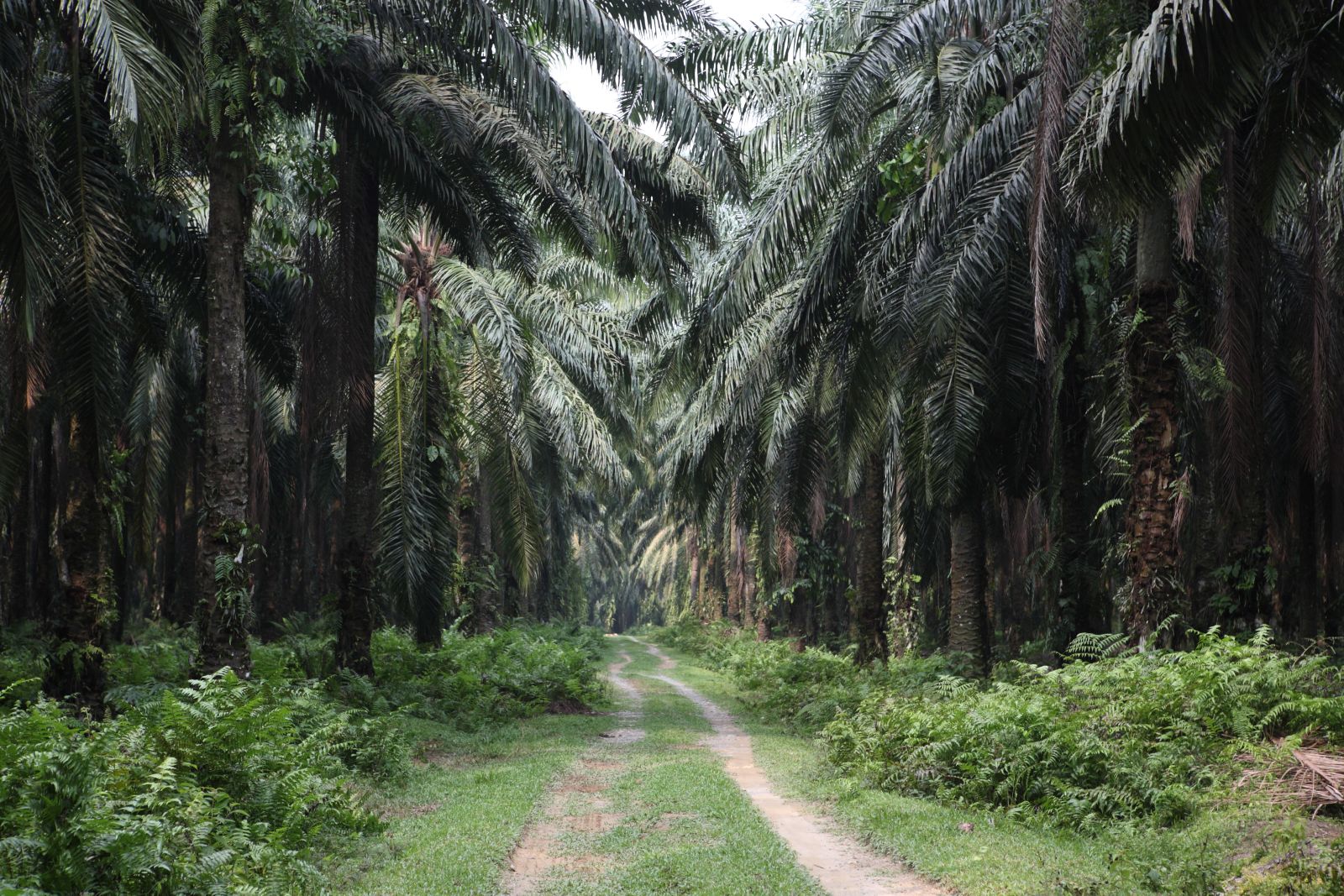Preserving forests
Cutting the losses

For decades, Indonesia was known for burning off its tropical forests and the carbon-rich peatland below. The idea was that the agroindustry would cash in on world demand for lumber, pulp and paper– and then palm oil, a key ingredient in many supermarket products.
Since 2002, however, the Indonesian government has worked to curtail the destructive practices. To save the forests, it has passed wide-ranging regulations, started a radical reform of forest management and begun to prosecute companies that illegally clear forests as well as corrupt officials who enable them.
Indonesia’s large-scale deforestation went on for more than four decades and was an environmental disaster. The burning of forests deprived the country of a natural means of storing carbon rather than releasing it into the atmosphere. It also killed off many forest-dwelling species, sharply reducing biodiversity.
Thanks to government action, the rate of deforestation today is less than one-third of what it was in the early 1990s and less than one-sixth of what it was during the worst period from 1996 to 2000. That was when 3.5 million hectares were lost each year. In all, nearly 60 million hectares of forest lands were cleared or burned between 1970 and 2016.
The efforts to stop the destruction are still under way. At stake is a rich and massive natural resource: Indonesia is home to the world’s third largest expanse of tropical forest. Half of its nearly 1.9 million square kilometres (188 million hectares) is covered by forest.
Preserving this environmental resource is a reward in itself, but there are other benefits as well. Norway has begun disbursing payments to Indonesia as part of a programme to encourage sustainable management of forests and enhancement of forest carbon stocks. The first instalment of $ 56 million for verified emission reduction in the financial year 2016-2017 is being disbursed through the newly established national environmental fund. In 2010, Norway and Indonesia had signed an agreement worth $ 1 billion in total – with payments depending on reduced deforestation and better forest management.
The large-scale damage to Indonesia’s forests began during the rule of President Suharto from 1967 to 1998. He viewed Indonesia’s vast forests as a resource to be exploited in pursuit of economic growth. He also used forests to consolidate his power, giving logging rights (on a no-bidding basis) for 62 million hectares of forest land to conglomerates run by family members, business partners and political and military allies.
A series of industries – logging in the 1970s, plywood in the 1980s, paper and pulp in the late 1980s, and, finally, palm oil in the 1990s – cleared about 30 % of Indonesia’s territory after 1970. They degraded or destroyed millions of hectares of forests (see box).
The worst years were 1996 to 2000, due to the 1997-1998 El Niño event, the Asian economic crisis, and a logging frenzy that was unleashed when President Bacharuddin Jusuf Habibie, President Suharto’s successor, abruptly transferred certain powers to local governments without corresponding budgets. In 1998, he gave districts and municipalities the authority to issue small concessions for the exploitation of forest land, primarily for fibre and oil-palm plantations.
Turning a corner
Beginning in mid-2002, however, Indonesia began to turn a corner on deforestation. The Ministry of Forestry used new legislation to quickly recentralise authority over forests. It stopped district governments from issuing permits for logging and forest conversion on state-owned land.
Illegal logging continued, however. To stop it, the government launched a mandatory certification system. The regulatory process took a long time, but in November 2016 Indonesia became the first country on earth to issue FLEGT (Forest Law Enforcement, Governance, and Trade) licenses and require them for exports of timber products to the EU. The system is monitored by a coalition of independent Indonesian civil-society organisations.
In addition, in January 2007 the government started a sweeping forest-management reform, organising 120.6 million hectares of forest land into forest management units (FMUs). The FMUs are similar to the Forstämter which manage forests in Germany. They represent a radical shift in regulation. Rather than issuing commodity licenses to private companies, trained forestry officials now directly manage forests and cooperate with local communities and the private sector, based on the requirements of each area.
The first FMUs were established in 2009. Their number has grown to 692 today. The driving force for creation of FMUs has been an Indonesian-German development project called Forests and Climate Change Programme (FORCLIME).
Other important initiatives followed: on 20 May 2011, President Susilo Bambang Yudhoyono called for a two-year moratorium on new licenses for logging, oil-palm farming, mining et cetera on 66 million hectares of old-growth forest land and peatland. The areas concerned were not subject to resource licencing previously. The moratorium has since been renewed every two years and is now permanent.
Further, in January 2016 Indonesia established the Peat Restoration Agency. The idea was to facilitate the restoration of 2.4 million hectares of degraded peatlands within five years. A presidential regulation prohibits new projects from draining and clearing peatland. It also bans companies that already have a license from draining intact peatland. In 2018, a separate presidential instruction halted new permits for oil-palm plantations.
The measures are showing results. The annual rate of deforestation has fallen from its peak of 3.5 million hectares a year during 1996 to 2000 to 650,000 hectares in 2015/2016; 480,000 hectares in 2016/2017; and 439,000 hectares in 2017/2018. According to the World Resource Institute (WRI), 324,000 hectares were cleared in 2018/2019 (WRI figures are based on a different methodology than the official Indonesian data). However, the battle is far from over. Just recently, the Ministry of Trade issued a regulation attempting to undermine the timber certification system. After an uproar in the national and international forest community and a two-month battle behind the scenes in Indonesia, however, the regulation was revoked. That was a major victory for environmentalism.
The Ministry of Environment and Forestry still struggles to enforce government regulations and create additional forest management units. Staffing of FMUs is proceeding too slowly. Some companies still manage to circumvent the moratoria on new resource licenses and new oil-palm plantation permits. A corrupt court system is undermining the ministry’s legal victories against firms engaged in illegal logging.
Overcoming Indonesia’s vast institutional, financial and political barriers to sustainable forest management is a herculean task. It will require political will, persistence and support from the international community.
Link
Scholte, M., 2019: Indonesia curtails deforestation (an independent background study).
https://forclime.org/documents/Books/2019-08-05_Briefing%20paper%20FORCLIME%20FINAL%20mjs_final.pdf
Marianne Scholte is a freelance journalist.
info@mscholte.de








